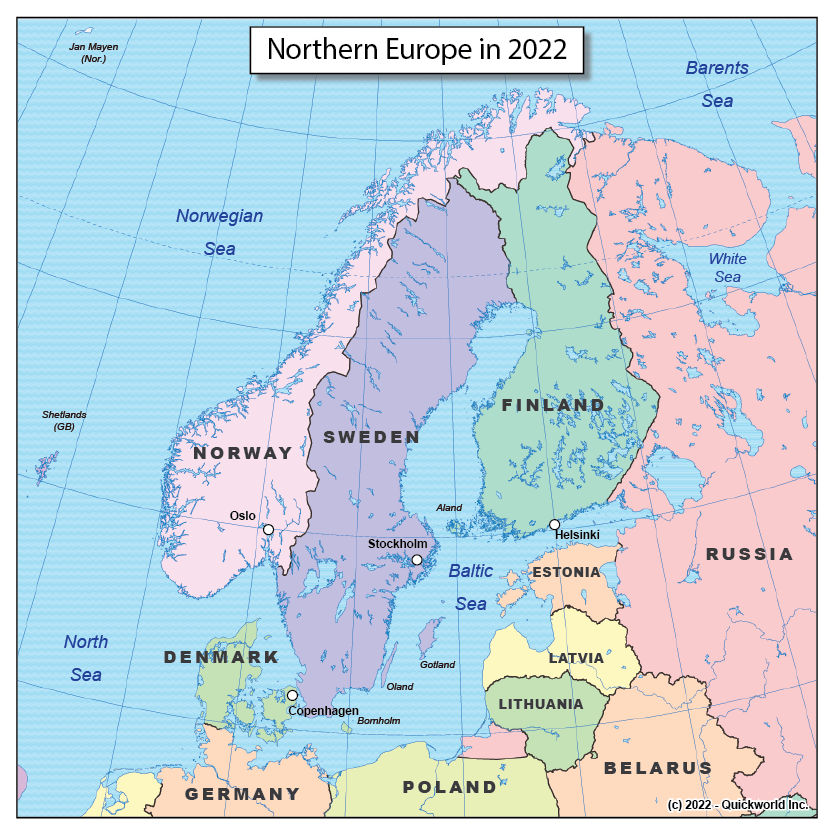Our series on The World in 2022 focuses on Northern Europe, a region that is split between 6 countries, with a population of less than 25 million.
While it is not possible to define "Northern Europe" precisely, it is customary to include in it two separate continental areas. The larger one, the Fenno-Scandinavian Peninsula, is separated from the rest of Europe through the Neva River, Lakes Ladoga and Onega, and the canal that links Lake Onega to the White Sea. Further West, the Jutland Peninsula, part of Denmark, is to the North of Central Europe. In between are many islands that are also considered part of Northern Europe: the Denmark Archipelago, Bornholm, Gotland, Oland, Aland, etc.
Ethnically, there are three groups: Germanic people, the Swedes, Norwegians and Danes, Finno-Ugrian people, the Finns, Karelians and Sami, and Slavic people, Russians whose migration to the region is more recent.
Not present on this map are a number of ocean islands that are also considered part of Northern Europe: Iceland, the Faroe Islands, Jan Mayen and Svalbard. Shetland, part of the United Kingdom, is also included sometimes.
Northern Europe in 2022


